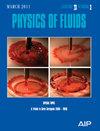基于多源卫星测高的北太平洋波浪特征分析
IF 4.1
2区 工程技术
Q1 MECHANICS
引用次数: 0
摘要
波浪特征的区域分析对于海洋工程规划和海洋灾害防护至关重要。然而,目前的波浪观测方法在获取足够覆盖范围和分辨率的波浪场数据,特别是显著波高(SWH)方面存在局限性。因此,我们采用四种融合方法对多源卫星高度计数据进行融合,生成北太平洋(NPO)上空间分辨率为 0.125° × 0.125°的每日 SWH 场。结果表明,融合后的 SWHs 表现出一致的空间分布模式,类似于卫星海洋学数据存档、验证和解释所提供的产品。考虑到沿轨数据的时空变化特征,与浮标测量相比,基于反距离加权的时空融合(IDW-ST)方法优于其他融合方法。在 IDW-ST 方法的基础上,我们融合了 2016 年至 2020 年的多源卫星测高数据,分析了 NPO 波浪的区域空间模式和变化。该地区的波浪主要受季风影响,并受热带气旋(TC)等极端天气系统的显著调节。波浪特征的季节性变化可能与热带气旋的频率和轨迹有关,在具有代表性的区域可观察到明显的局部特征。例如,在北纬度地区,西南气旋的概率分布呈现拖尾模式,与主西南气旋有明显偏差,尤其是在冬季。此外,在中部高纬度地区(夏季除外),观测到重尾分布。这些模式表明了这些区域发生极端波浪事件的频率和严重程度。本文章由计算机程序翻译,如有差异,请以英文原文为准。
Analysis of wave characteristics in the North Pacific Ocean based on the fusion of multi-source satellite altimetry
Regional analysis of wave characteristics is crucial for ocean engineering planning and marine disaster protection. However, current wave observation methods have limitations in capturing sufficient coverage and resolution of wave field data, specifically significant wave height (SWH). Thus, we fuse multi-source satellite altimeter data using four fusion methods to generate daily SWH fields with a spatial resolution of 0.125° × 0.125° over the North Pacific Ocean (NPO). The results show that the fused SWHs exhibit a consistent spatial distribution pattern similar to the product provided by Archiving, Validation, and Interpretation of Satellite Oceanographic Data. Considering the spatial and temporal variation characteristics of the along-track data, the inverse distance weighting-based spatiotemporal fusion (IDW-ST) method outperforms other fusion methods compared to buoy measurements. Building upon the IDW-ST method, we fuse multi-source satellite altimetry data from 2016 to 2020 and analyze the regional spatial patterns and variations of waves in the NPO. Waves in this region are primarily influenced by monsoons and significantly regulated by extreme weather systems, such as tropical cyclones (TCs). Seasonal variations in wave characteristics may be linked to the frequency and tracks of TCs, with distinctive local features observed in representative zones. For example, the probability distribution of SWHs in the NPO exhibits a trailing pattern with significant deviations from the main SWHs, particularly during winter. Additionally, a heavy-tailed distribution is observed in the central high-latitude zone, except during summer. These patterns indicate the frequency and severity of extreme wave events in these zones.
求助全文
通过发布文献求助,成功后即可免费获取论文全文。
去求助
来源期刊

Physics of Fluids
物理-力学
CiteScore
6.50
自引率
41.30%
发文量
2063
审稿时长
2.6 months
期刊介绍:
Physics of Fluids (PoF) is a preeminent journal devoted to publishing original theoretical, computational, and experimental contributions to the understanding of the dynamics of gases, liquids, and complex or multiphase fluids. Topics published in PoF are diverse and reflect the most important subjects in fluid dynamics, including, but not limited to:
-Acoustics
-Aerospace and aeronautical flow
-Astrophysical flow
-Biofluid mechanics
-Cavitation and cavitating flows
-Combustion flows
-Complex fluids
-Compressible flow
-Computational fluid dynamics
-Contact lines
-Continuum mechanics
-Convection
-Cryogenic flow
-Droplets
-Electrical and magnetic effects in fluid flow
-Foam, bubble, and film mechanics
-Flow control
-Flow instability and transition
-Flow orientation and anisotropy
-Flows with other transport phenomena
-Flows with complex boundary conditions
-Flow visualization
-Fluid mechanics
-Fluid physical properties
-Fluid–structure interactions
-Free surface flows
-Geophysical flow
-Interfacial flow
-Knudsen flow
-Laminar flow
-Liquid crystals
-Mathematics of fluids
-Micro- and nanofluid mechanics
-Mixing
-Molecular theory
-Nanofluidics
-Particulate, multiphase, and granular flow
-Processing flows
-Relativistic fluid mechanics
-Rotating flows
-Shock wave phenomena
-Soft matter
-Stratified flows
-Supercritical fluids
-Superfluidity
-Thermodynamics of flow systems
-Transonic flow
-Turbulent flow
-Viscous and non-Newtonian flow
-Viscoelasticity
-Vortex dynamics
-Waves
 求助内容:
求助内容: 应助结果提醒方式:
应助结果提醒方式:


